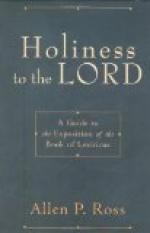The rags should stand in the drainers for at least one week, though better results are obtained if they are left for a period two or three times as long, as the fibers become more subdued. The process of paper-making as it has already been described, applies more particularly to papers made from rags. To-day, a very large proportion of the cheaper papers are made from wood, either entirely or in part, and these wood-made papers are subjected to a different treatment, to which further reference will be made.
From the drainer the mass is carted to the beating engine, or “beater,” which is very similar in construction to the washer just described. The knives on the roll in the beater are grouped three together instead of two, and are placed nearer the bottom or bed-plate in order to separate more thoroughly the fibers. In the beater are performed many and varying manipulations, designed not only to secure a more perfect product but also to produce different varieties of paper. It is the theory of the beating process that the fibers are not cut, but are drawn out to their utmost extent. In watching the operations of the “beater,” one notices on the surface of the slowly revolving mass of fibers, floating bluing, such as the thrifty housewife uses to whiten fine fabrics. This familiar agency of the laundry is introduced into the solution of fibers with the same end in view that is sought in the washtub—to give the clear white color that is so desirable. Many of the inventions and discoveries by which the world has profited largely have been due primarily to some fortunate accident, and according to a pretty story upon which paper-makers have set the seal of their belief for more than one hundred and fifty years, the use of bluing was brought about in the same way. About the year 1746, so runs the story, a Mrs. Buttonshaw, the wife of an English paper-maker, accidentally dropped into a tub of pulp the bag of bluing, or its contents, which she was about to use in a washing of fine linen. Frightened at what she had done and considering it the part of wisdom to keep silence, she discreetly held her peace and awaited results. But when her husband had expressed great wonder and admiration over the paper made from that particular pulp, and had sold it in London at an advance of several shillings over the price of his other paper, which had not met with any such accident, she realized that the time for silence had passed. Her account of the happy accident led her grateful husband to purchase a costly scarlet cloak for her on his next visit to London town. This accident brought about another result which was to prove of inestimable value to the future paper-maker—the use of bluing in paper when especial whiteness is desired.




